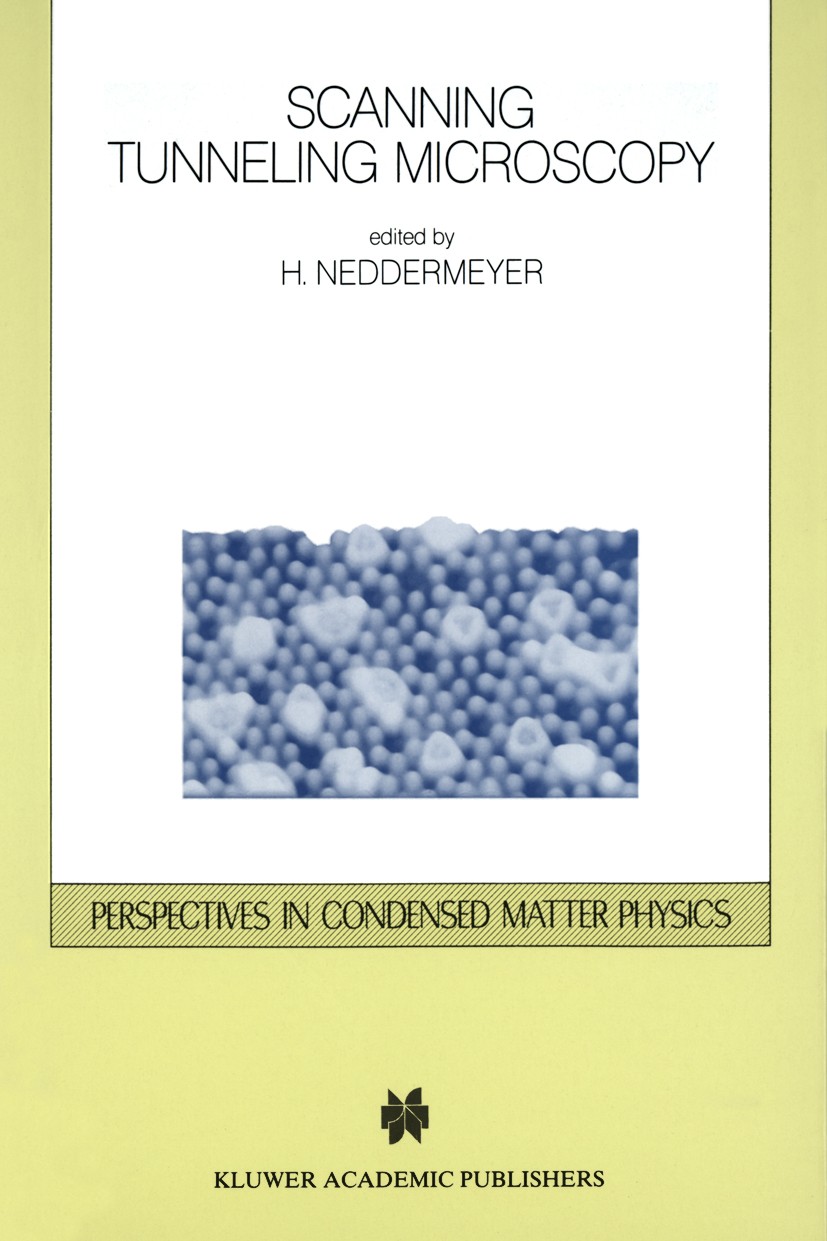| 书目名称 | Scanning Tunneling Microscopy |
| 编辑 | H. Neddermeyer |
| 视频video | http://file.papertrans.cn/862/861177/861177.mp4 |
| 丛书名称 | Perspectives in Condensed Matter Physics |
| 图书封面 |  |
| 描述 | The publication entitled "Surface Studies by Scanning Tunneling Mi Rl croscopy" by Binnig, Rohrer, Gerber and Weibel of the IBM Research Lab oratory in Riischlikon in 1982 immediately raised considerable interest in the sur face science community. It was demonstrated in Reference R1 that images from atomic structures of surfaces like individual steps could be obtained simply by scanning the surface with a sharp metal tip, which was kept in a constant distance of approximately 10 A from the sample surface. The distance control in scanning tunneling microscopy (STM) was realized by a feedback circuit, where the electri cal tunneling current through the potential barrier between tip and sample is used for regulating the tip position with a piezoelectric xyz-system. A similar experi mental approach has already been described by Young et al. for the determination l of the macroscopic roughness of a surface. A number of experimental difficulties had to be solved by the IBM group until this conceptual simple microscopic method could be applied successfully with atomic resolution. Firstly, distance and scanning control of the tip have to be operated with sufficient precision to be sen |
| 出版日期 | Book 1993 |
| 关键词 | Adsorption; PED; REM; STM; alloy; liquid; microscopy; spectroscopy |
| 版次 | 1 |
| doi | https://doi.org/10.1007/978-94-011-1812-5 |
| isbn_ebook | 978-94-011-1812-5Series ISSN 0923-1749 |
| issn_series | 0923-1749 |
| copyright | Springer Science+Business Media B.V. 1993 |
 |Archiver|手机版|小黑屋|
派博传思国际
( 京公网安备110108008328)
GMT+8, 2025-12-16 15:40
|Archiver|手机版|小黑屋|
派博传思国际
( 京公网安备110108008328)
GMT+8, 2025-12-16 15:40


